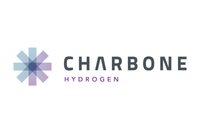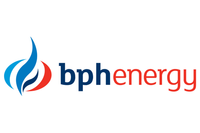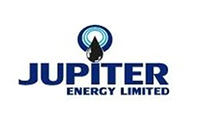China has an enormous gas market to be filled, both in the short term and long term, where natural gas will account for as much as 12 percent of the primary energy needs over the next decade from the current 3.8 percent. Shell’s Chief Financial Officer Simon Henry indicated that the company may invest $1 billion each year in China if PetroChina’s two wells in Sichuan province prove they have the potential for commercial gas production.
By Dave Brown – Exclusive to Gas Investing News
Nearly mirroring last week’s headline spotlight, putting Chinese interests in negotiations on multiple foreign oil and gas sources, this week highlights international interest in a number of Chinese shale gas projects. Analysts suggest that a shale gas market will emerge quickly in China as the players ramp up activities in the unconventional gas sector, which is likely to experience double-digit growth year-on-year. China is at the preliminary stage of developing unconventional gases such as shale gas and coalbed methane gas; however, shale gas production has not yet started, while coalbed methane gas output is relatively minor.
Chinese oil companies have entered partnerships with foreign gas explorers, including Royal Dutch Shell Plc (NYSE:RDS.B) and Chevron Corp. (NYSE:CVX), to tap unconventional gas resources to help reduce reliance on oil and coal. Earlier this month, Statoil ASA (NYSE:STO), Norway’s biggest company by market capitalization, said it is also close to a deal to explore shale gas reserves in China.
The formation of a shale gas market is linked to the ability to access resources and exploration, pipelines that link assets with the market, and a downstream pricing mechanism. China may have 26 trillion cubic metres of shale gas reserves, more than 10 times its proven holdings of conventional natural gas, and production may reach the equivalent of as much as 12 percent of conventional gas output. China will offer six shale gas exploration blocks to the country’s largest oil producers PetroChina, Sinopec, CNOOC and Shaanxi Yanchang Petroleum Group Co in an auction to take place by the end of this month. The shale gas blocks, each as large as 7,000 square kilometres, are in the provinces of Anhui, Guizhou, Shanxi, and Zhejiang, and the municipality of Chongqing.
Shell’s Chief Financial Officer Simon Henry indicated that the company may invest $1 billion each year in China if PetroChina’s two wells in Sichuan province prove they have the potential for commercial gas production. PetroChina expects to produce 500 million cubic meters of shale gas by 2015.
“China has an enormous gas market to be filled, both in the short term and long term, where natural gas will account for as much as 12 percent of the primary energy needs over the next decade from the current 3.8 percent,” said Arthur Hanna, global managing director of energy at consulting firm Accenture.
Expanding the Scope
On Tuesday CNOOC Ltd said it had completed a deal with Chesapeake Energy Corp (NYSE:CHK) to buy a stake in a shale oil and gas project in the United States. Earlier in the year, CNOOC purchased a 33.3 percent interest in Chesapeake’s 600,000 acreage oil and natural gas project, Eagle Ford Shale, in Southern Texas. The company paid $1.08 billion in cash, plus an additional $40 million payment adjustment at closing.
Spot Prices and Market Conditions
Ironically, it was speculation this week that China, the world’s biggest energy-consuming country, is set to raise interest rates that created downside pressure on petroleum prices. Contributing to the drop was a concern that Europe’s debt crisis is worsening. Ireland is struggling after a contraction in the housing market forced the country to take over three large banks and a financial bailout of Greece earlier this year put pressure on commodities and raised concerns about diminished demand.
On Thursday, prices rebounded from a four-week low as the growing prospect that Ireland will get a rescue bailout from the European Union. Crude rose as much as 2.1 percent, breaking four consecutive days of declines, after Ireland’s central bank governor said he expects the country to seek a bailout from the European Union and the International Monetary Fund. Natural gas spot prices at the Henry Hub rose 2.99 percent to the $3.79 per thousand British thermal units.
Gasoline inventories slipped 2.66 million barrels to 207.7 million, the lowest level since the week ended Oct. 16, 2009, according to a report from the Department of Energy (DOE). The street consensus was a projected decline of 750,000 barrels. The report showed crude imports contracted 2.8 percent to 7.86 million barrels a day, the lowest level since December. Gasoline imports in the week were at 562,000 barrels a day, the lowest levels since January 2004. Stockpiles of distillate fuel, a category that includes heating oil and diesel, fell 1.11 million barrels to 158.8 million with street estimates anticipating a 2 million barrel decline. “The weekly data’s most striking feature may have been the continued weakness in imports,” said Antoine Halff, head of energy research at broker Newedge.






